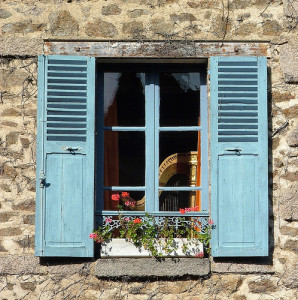
05
2012Workshop: Understanding Exposure
The definition from Wikipedia.org
In photography, exposure is the amount of light allowed to fall on each area unit of a photographic medium (photographic film or image sensor) during the process of taking a photograph. Exposure is measured in luxseconds, and can be computed from exposure value (EV) and scene luminance in a specified region. Exposure is the amount of light that you allow to hit an object or area in a photograph. This can convey a certain message or mood in one’s picture.
In photographic jargon, an exposure generally refers to a single shutter cycle. For example: a long exposure refers to a single, protracted shutter cycle to capture enough low-intensity light, whereas a multiple exposure involves a series of relatively brief shutter cycles; effectively layering a series of photographs in one image. For the same film speed, the accumulated photometric exposure (Hv) should be similar in both cases.
The three elements are:
ISO – the measure of a digital camera sensor’s sensitivity to light
Aperture – the size of the opening in the lens when a picture is taken
Shutter Speed – the amount of time that the shutter is open
It is at the intersection of these three elements that an image’s exposure is worked out.
Most importantly – a change in one of the elements will impact the others. This means that you can never really isolate just one of the elements alone but always need to have the others in the back of your mind.

People often describe the relationship between ISO, Aperture and Shutter Speed using different metaphors to help us get our heads around it. Let us explore the Window example:

The Window
Imagine your camera is like a window with shutters that open and close.
Aperture is the size of the window. If it’s bigger more light gets through and the room is brighter.
Shutter Speed is the amount of time that the shutters of the window are open. The longer you leave them open the more that comes in.
Now imagine that you’re inside the room and are wearing sunglasses (hopefully this isn’t too much of a stretch). Your eyes become desensitized to the light that comes in (it’s like a low ISO).
There are a number of ways of increasing the amount of light in the room (or at least how much it seems that there is. You could increase the time that the shutters are open (decrease shutter speed), you could increase the size of the window (increase aperture) or you could take off your sunglasses (make the ISO larger).
Hopefully this demystifies the term exposure and you now understand a little more about how your camera is making decisions to generate the “perfect” exposure. There are circumstances where the camera gets it wrong, like photographing a person against a sunset (and all you get is a silhouette) or shooting in low light situations like at parties and everyone turns out white. We will continue to look into the reason why these situations occur in later posts so you can make the right creative choices with your camera.
Happy shooting…
